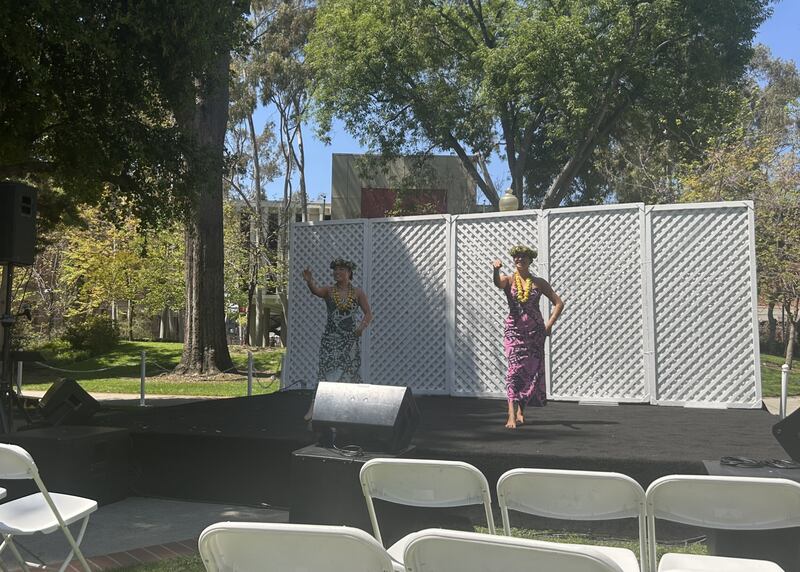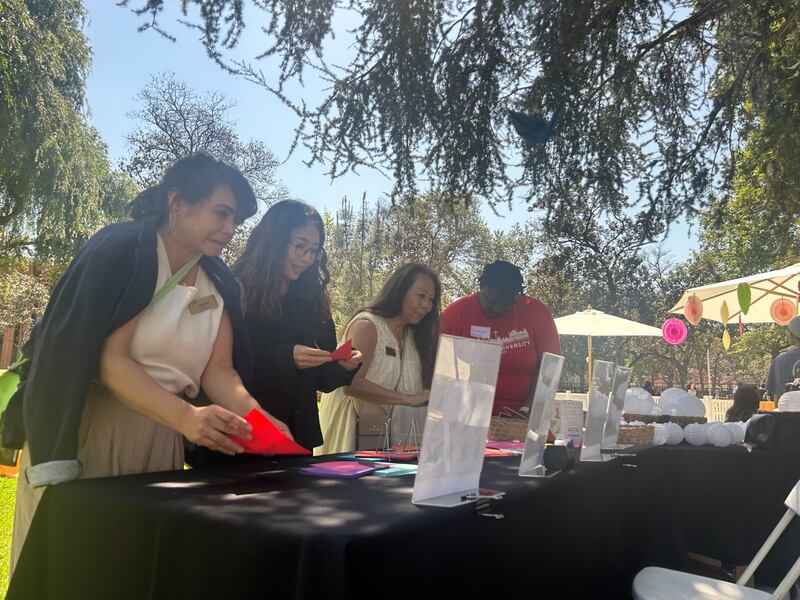The Asian American and Pacific Islander (AAPI) community served up a healthy dose of culture and gratitude along with delicious food at USC’s celebration in Founders Park on April 9.
The event commemorated AAPI Heritage Month, which will begin May 1. Attendees were given a punch card with six empty spaces to fill with stamps given by student and USC advocacy booths across the lawn. With six, students could exchange the card for spicy musubis and onigiris from Mama Musubi, butter paneer biryanis from Indulgia, buko pandan and turon from Dollar Hits Street Food and Thai tea from Emporium Thai.
The Asian Pacific American Student Assembly (APASA) hosts many similar events throughout the year, like the Fall Night Market and the Spring Cultural Expo. They also host talks with AAPI public figures like Tim Chantarangsu, Lyn Lapid, Simu Liu, Hasan Minhaj and Stephanie Hsu.
Planning events, hosting seminars and celebrating AAPI culture takes time, money and effort. However, with the recent USC funding cuts, student organizations like APASA may be at risk.
“If these student orgs didn’t exist, there would be nothing happening,” Sage Murthy, co-recruitment director and incoming executive director of APASA, said.
On a campus of more than 40,000 students, Murthy said many often find themselves unable to find a community that shares their background and cultural values.
“[Students] are able to build community. In APASA it feels like I’m two degrees of separation from everyone on campus,” Murthy said. “It gives me a perspective of how important students are on this campus.”
Virginia Egere, member of APASA and frequent attendee of Pacific Islander Student Association (PISA) events, said she was not used to having a Pacific Islander community at her school.
“I was really surprised at the people I found here. I found people I could relate to in PISA,” Egere said.. “Whenever someone would ask me [about my heritage], I’d have to say, ‘So Tonga is this little island off the coast’ and they’d be like, ‘Oh, okay.’ Now there are events where you come to the club meeting in traditional dress.”
Egere referenced Hawaii Club’s annual Hawaiian Lūʻau, where students were taught how to dance hula. Mehana Paul, a hula performer and the cultural director of the Hawaii Club, said they believe hula is more than just a tradition or a dance.
“Hula is the foundation of my cultural understanding,” she said. “Hula is storytelling. You’re learning the stories of your people. Culture shapes your values, your worldview, who you are.”

“Instead of enrolling me in hip-hop or ballet, [my mother] enrolled me in Hula,” Haley Do, co-lūʻau chair of the Hawaii Club, said. “I started learning when I was five, six years old, and it became an important part of who I am.”
“There’s no age limit on hula. You can dance ‘til the very end.” Paul chimed in. “My mom and my grandma still dance, actually. I think I’ll pass it on to my kids.”
Stalls filled with activities like origami folding allowed event-goers to participate in Asian culture. Others, like the USC archive stall, were designed to remind AAPI students of their heritage, from the Indian Student Association in 1968 to the Singapore Students Association in the 1985 yearbook. However, some said there is not enough representation in other spaces on campus.

